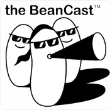The following appeared first in the May 13, 2013 issue of Ad Age:
There is a false assumption when talking about what goes viral. It's something like this: "Viral is what happens to great content."
It's a nice thought. Sometimes it's even true. But as much as we'd like to believe that well-scripted, beautifully produced and properly placed content always goes viral, again and again we see examples of how that's just not the case.
When we look at the most popular form of content on YouTube right now, we find something called "shopping-haul" videos. These are webcam videos of teenage girls and young women showing off clothes they just bought. Bad video, bad sound -- and still many of these pieces of content soar to tens of thousands of views.
Certainly, well-produced content can and does go viral. But why is it that poorly shot, camera-phone or webcam video goes viral more often?
There are lots of theories about this. Some suggest that it's the authenticity of the videos. Others make the case that hand-held video is simply more compelling for online viewers. All agree that paid promotion and PR are usually at play. Remember, Volkswagen's "The Force" (the Darth Vader ad) was also a Super Bowl spot, and the campaign was augmented with lots of search marketing and PR efforts.) But look deeper at the similarities between both professional and amateur-produced content that explodes into a meme. The most successful content creates an opportunity for the audience to participate in a meaningful way.
This represents a huge shift in the way we view advertising creative. In traditional advertising we view the content as artwork. We create it, the audience reacts to it and we hopefully drive purchases. But in the realm of earned impressions -- where reaction videos, commentary, blog posts and user pictures matter -- we need to start thinking of the palette we are giving to our audience.
No single shopping-haul video equals the view-count success of the Evian "Babies" or the VW "The Force" ads. But together, they represent a massive movement of content that eclipses the artwork successes of both these brands. VW introduced a memorable Super Bowl commercial and goosed mass awareness with its viral success. But shopping-haul videos create awareness while radically transforming fashion marketing through the recommendations of actual customers.
The natural response to shopping-haul content would be for fashion brands to create their own shopping-haul videos. But what if these brands instead created leading questions, useful tools and creative ads that inspired their already-engaged audience to participate even more? We're not talking about user-generated-content campaigns. We're talking about brand creative that inspires, polarizes and encourages the audience to assume they are already a natural part of the message.
In a palette approach to creative, we start and end with the audience. One of the best examples of a brand doing this is MyCharity: Water. It controls its brand and its image, but it leaves a natural hook for participation and creativity in everything it does. Its national fundraising campaigns do something that few nonprofits address: They value people who can't give as much as those who can.
If you can bike or give up your birthday, MyCharity gives you a platform to transform your activity into fundraising. And it shares the social status that results. You, as a fundraiser, are glorified amongst your own audience as much as the brand that you are supporting.
The secret to earned media is not just counting how many times your ad or content is shared or viewed. The secret is understanding that your best supporters have brands too, and that they value these brands as much as you value yours. The more we develop a campaign palette that empowers our audience to look good to their own audiences, the more likely they will participate and generate the kind of viral phenomenon that actually changes opinion and generates sales.
Artwork ads have their place. But once you're done looking at a piece of art, you usually move on to the next one. But a well-prepared palette ad is an endless engine of possibilities that can extend the life of a campaign beyond all expectations.


